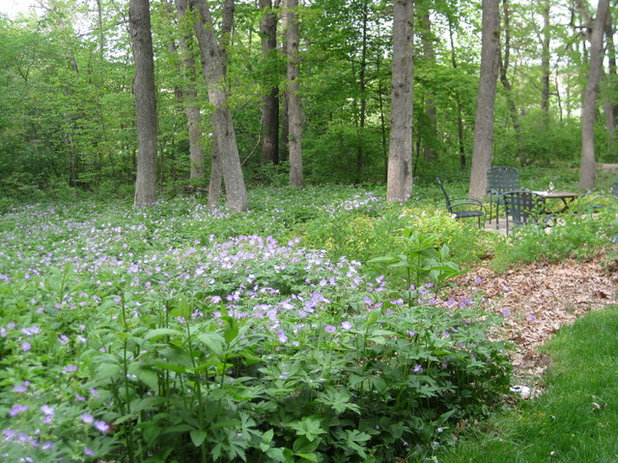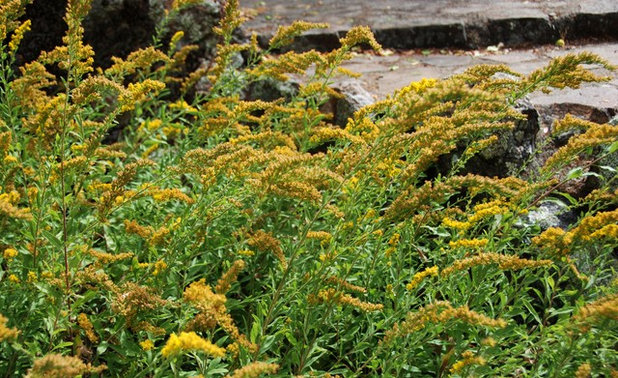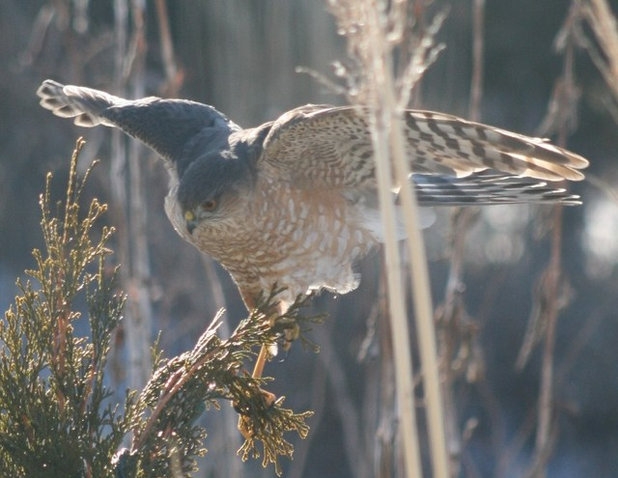Gardening is not simple or easy, no matter how hard commercials and television shows try to persuade us. Gardening is not a weekend job but a lifetime experience, like raising kids, falling in love or learning a new language. Plants and wildlife teach us about our world and ourselves, and the more we learn about them through research and experience and time spent with them, the easier gardening becomes — because “easy” means knowledge gained over time, as well as a healthy dose of being able to shrug it off. Here’s hoping we can teach and learn from one another in another installment of native-plant myths.

Prairie Restorations, Inc
Myth 1: Native plants are super adaptable, no matter what. They aren’t miracle workers. We might see native plants thriving in a prairie, desert or woodland not far from our house and assume — sometimes rightly so — that they’ll then also thrive for us. But wild plant communities work under a different set of conditions: places with soil enriched by specific decaying matter and organisms over centuries, plants filling very specific niches of sunlight or drainage (niches that may change from year to year as tree canopies change, flood or droughts occur, or herbivores change grazing patterns).
While many natives found in the wild will certainly work in a designed landscape, plant failure and change are inevitable in any managed space. It’s our job to learn from and celebrate those happenings, not see them as mistakes or personal failures, as we work to create more resilient, sustainable and wildlife-friendly spaces at home.
How to Find the Right Plants for Your Garden
Shown: Wild geranium (
Geranium maculatum) in a Minnesota woodland garden

Pete Veilleux, East Bay Wilds
Myth 2: A native plant is a native plant. I know, I know, you’re starting to think: “Native plants are more complicated than I figured.” But that’s a good thing. The more deeply we think about horticulture and how we garden, the better off our natural world will be.
If you’re lucky, you are seeing more and more native plants for sale at your local nurseries — even at the big-box stores and regional chains. This is a good thing, but many of those native plants are clones, reproduced via cuttings to maintain uniformity in size and bloom, along with other traits that they’ve been selected or bred for. This is great for the industry because consistency sells — we all know what we’re getting, just like at a car dealer — but it might not be great for genetic diversity, which leads to more resilient plants and ecological communities. We need open-pollinated natives, which are not likely things like coneflowers with exciting new colors or pompom blooms. It may just be that a coneflower in your garden has more in common with one a thousand miles away than one across the street in a field.
If you can, try to find local nurseries and seed companies that source from local plants. These open-pollinated plants will also be in sync to bloom for insects who time their life cycle around the plants. But no matter what, ask for natives at your local nursery, and then buy them.
Shown: California goldenrod (
Solidago californica)

Stelle Lomont Rouhani Architects
Myth 3: Native plants should always be planted in the same way they grow in the wild. In an ideal world I’d agree with this, as plants found together in the wild often support one another in ways that might also benefit them elsewhere. But since many of us don’t live in wild environments, our landscapes probably demand that native plants be used in a diversity of aesthetic ways, from masses to formal designs to cottage-style gardens. Grasses might be the most obvious example of plants used for formal effect; they can punctuate corners or line driveways with minimalist ease. But there are plenty of ways to use natives in a non-native, non-wild landscape.

Benjamin Vogt / Monarch Gardens
Myth 4: Native plants attract unwanted guests, like snakes, ticks and rodents. Nature exists. It is a wild and thrilling and dynamic place full of creatures that have important roles, even if we don’t feel that way — hello, mosquito. In my garden I have mice, which are picked off by friendly garter snakes and the occasional small hawk. Those mice also do a good job of eating seeds from plants that might self-sow a little too much for my taste. Ticks are everywhere — in lawns, shrubs and trees; on fences; on decks — because they live outside, so we just have to deal with them (daily tick checks, repellent and so on).
It is a very good thing when you start seeing new wildlife take up residence in your landscape; you are creating a richer, more dynamic place that is welcoming life that may have nowhere else to go nearby. Study, research and learn about the life in your garden, and maybe you’ll end up with a deeper appreciation of the garden you’ve created.





